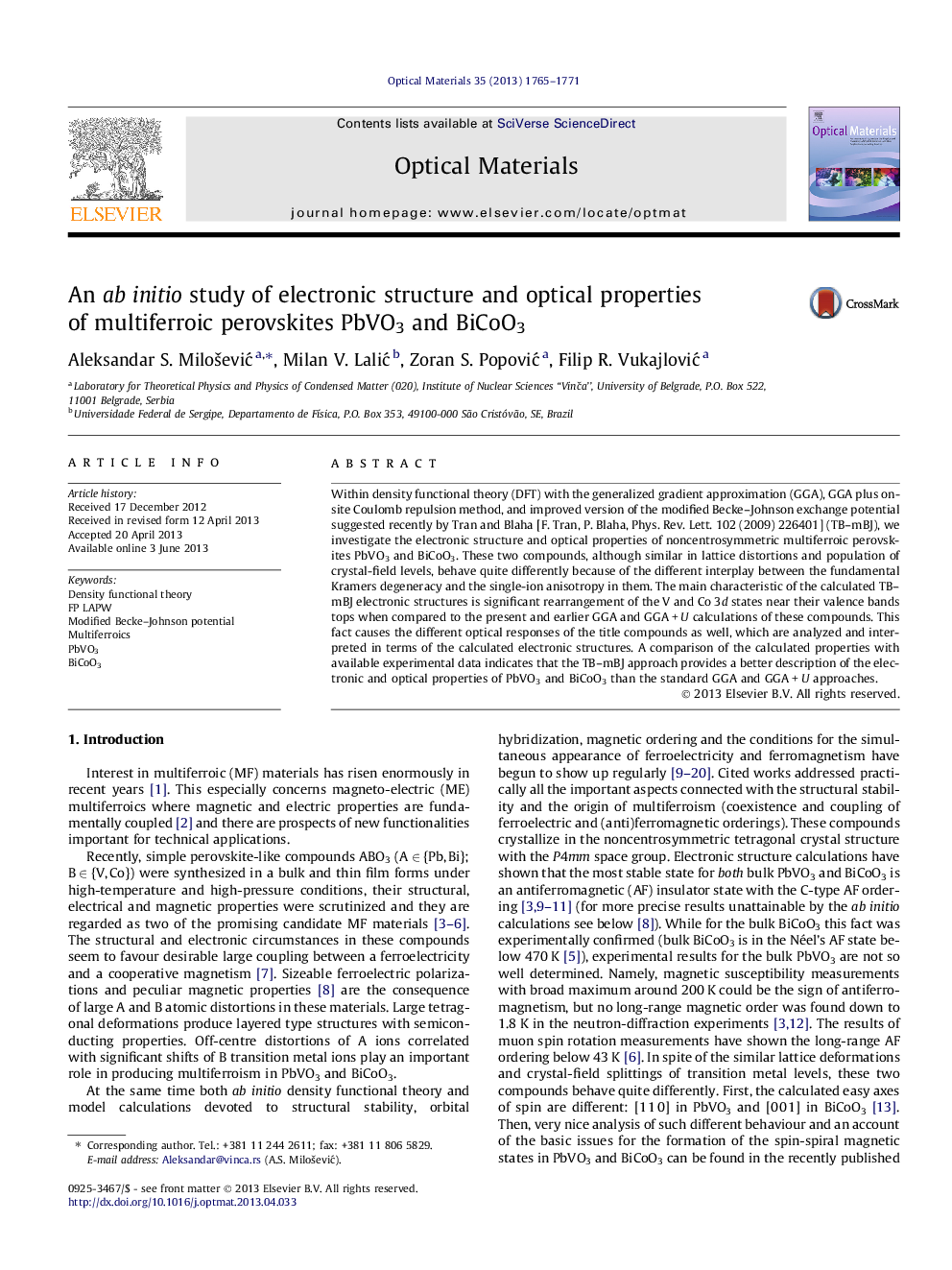| Article ID | Journal | Published Year | Pages | File Type |
|---|---|---|---|---|
| 1495180 | Optical Materials | 2013 | 7 Pages |
•Within DFT we studied electronic structure and optical properties of PbVO3 and BiCoO3.•Four different XC potentials were employed including a modified Becke–Johnson potential (TB–mBJ).•Various optical coefficients were calculated.•Decomposition of the imaginary part of the dielectric tensor in terms of the calculated band structure was performed.•TB–mBJ shows best agreement with experiments (compared to the other three XC potentials).
Within density functional theory (DFT) with the generalized gradient approximation (GGA), GGA plus on-site Coulomb repulsion method, and improved version of the modified Becke–Johnson exchange potential suggested recently by Tran and Blaha [F. Tran, P. Blaha, Phys. Rev. Lett. 102 (2009) 226401] (TB–mBJ), we investigate the electronic structure and optical properties of noncentrosymmetric multiferroic perovskites PbVO3 and BiCoO3. These two compounds, although similar in lattice distortions and population of crystal-field levels, behave quite differently because of the different interplay between the fundamental Kramers degeneracy and the single-ion anisotropy in them. The main characteristic of the calculated TB–mBJ electronic structures is significant rearrangement of the V and Co 3d states near their valence bands tops when compared to the present and earlier GGA and GGA + U calculations of these compounds. This fact causes the different optical responses of the title compounds as well, which are analyzed and interpreted in terms of the calculated electronic structures. A comparison of the calculated properties with available experimental data indicates that the TB–mBJ approach provides a better description of the electronic and optical properties of PbVO3 and BiCoO3 than the standard GGA and GGA + U approaches.
